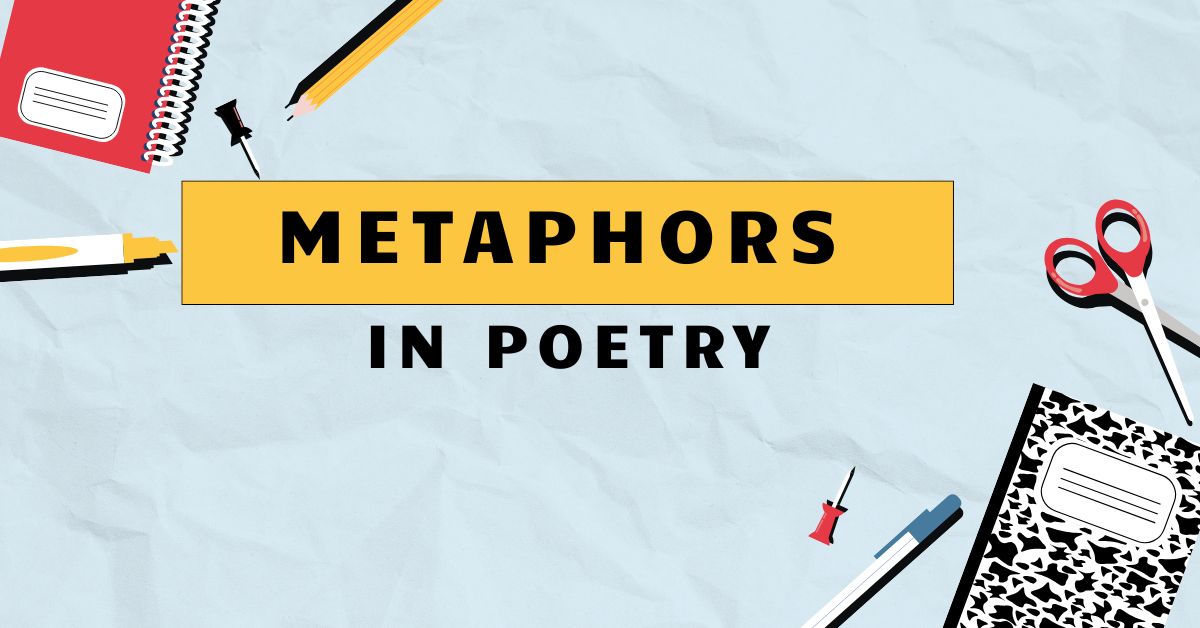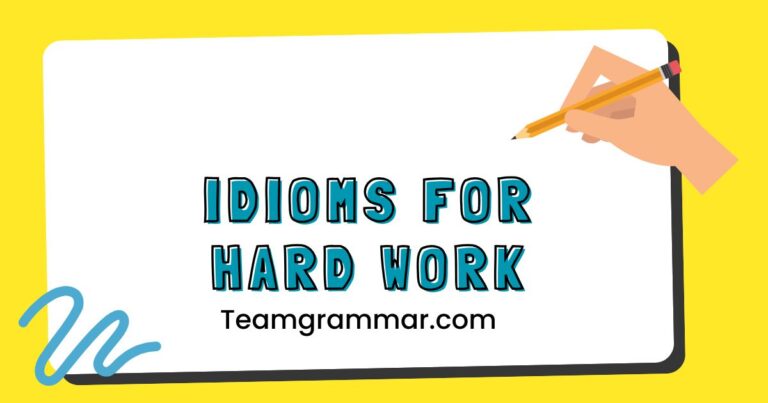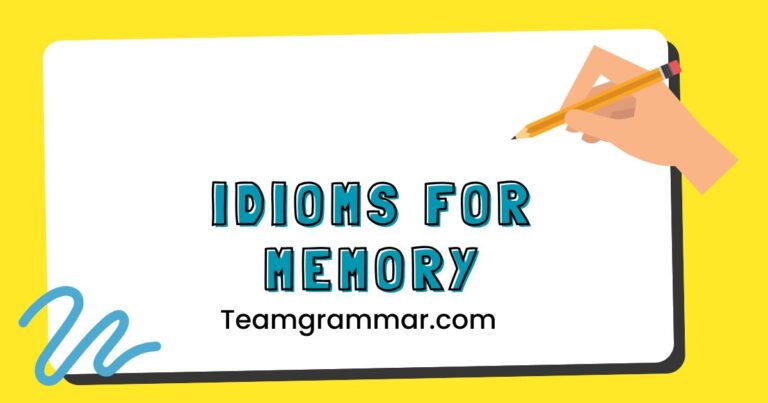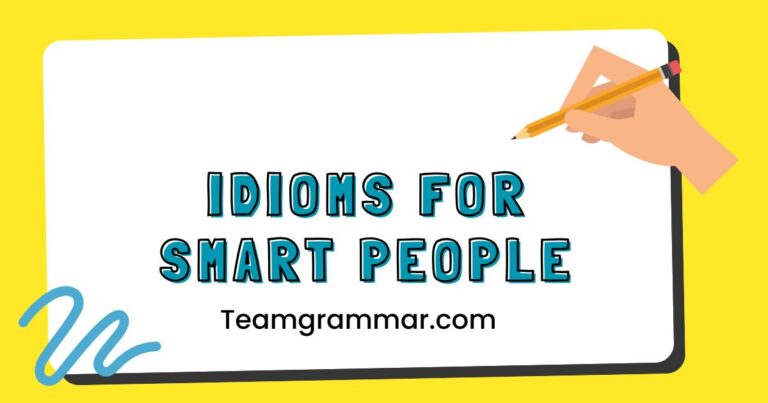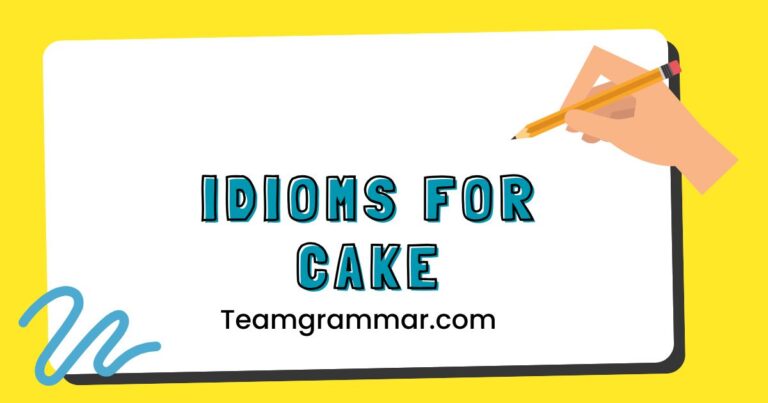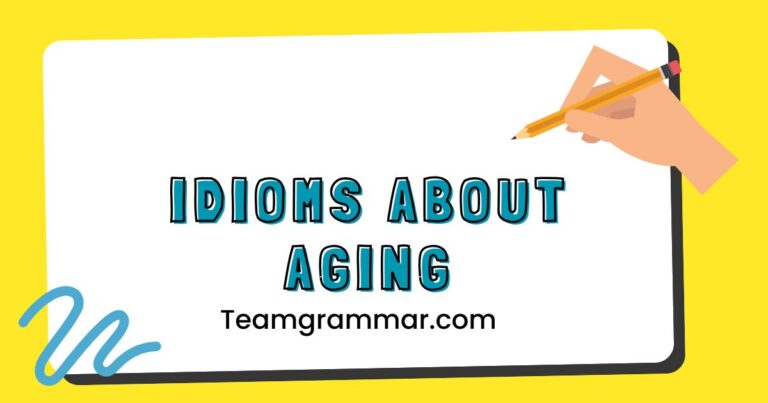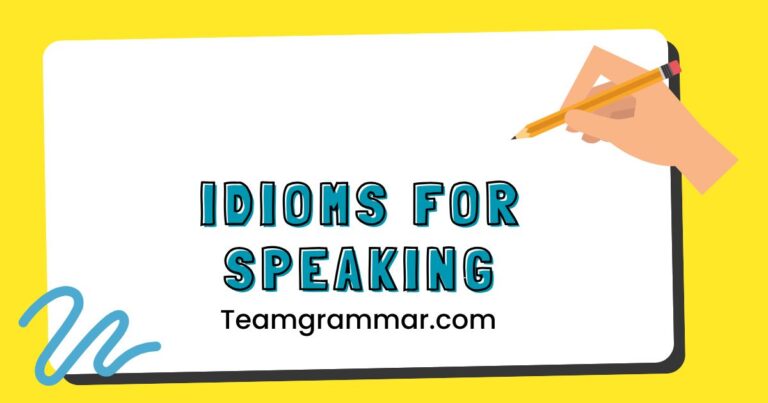37 Metaphors in Poetry: A Comprehensive Guide
Metaphors are the lifeblood of poetry, transforming ordinary language into vibrant, evocative expressions. Understanding metaphors is crucial for both appreciating and creating compelling poetry.
This article delves into the intricacies of metaphors, exploring their definition, structure, types, and usage, providing you with the tools to master this essential poetic device. Whether you are a student, a budding poet, or simply a lover of language, this guide will enhance your understanding and appreciation of metaphors in poetry.
Table of Contents
- Introduction
- Definition of Metaphor
- Classification of Metaphors
- Function of Metaphors in Poetry
- Context of Metaphor Usage
- Structural Breakdown of Metaphors
- Tenor and Vehicle
- Implied Metaphors
- Extended Metaphors
- Types of Metaphors
- Standard Metaphor
- Mixed Metaphor
- Dead Metaphor
- Conceptual Metaphor
- Examples of Metaphors in Poetry
- Standard Metaphor Examples
- Mixed Metaphor Examples
- Dead Metaphor Examples
- Extended Metaphor Examples
- Usage Rules for Metaphors
- Clarity and Relevance
- Originality and Freshness
- Consistency in Extended Metaphors
- Common Mistakes with Metaphors
- Overuse of Metaphors
- Using Cliched Metaphors
- Inappropriate Metaphors
- Practice Exercises
- Exercise 1: Identifying Metaphors
- Exercise 2: Creating Metaphors
- Exercise 3: Analyzing Metaphors
- Advanced Topics in Metaphor Usage
- Cognitive Linguistics and Metaphor
- Cultural Variations in Metaphor
- Metaphor and Symbolism
- Frequently Asked Questions
- Conclusion
Definition of Metaphor
A metaphor is a figure of speech that directly compares two unlike things without using “like” or “as.” It asserts that one thingisanother, creating a relationship that reveals new and interesting qualities. Metaphors are essential tools in poetry, allowing poets to convey complex emotions, ideas, and experiences in a concise and impactful way.
They enrich language, making it more vivid and imaginative.
Classification of Metaphors
Metaphors can be classified based on their explicitness and complexity. Some metaphors are direct and straightforward, while others are more subtle and require deeper interpretation.
Understanding these classifications can help you better analyze and appreciate the nuances of poetic language. We can categorize metaphors into standard metaphors, implied metaphors, extended metaphors, mixed metaphors, and dead metaphors.
Function of Metaphors in Poetry
Metaphors serve several crucial functions in poetry. They add depth and complexity to the poem’s meaning, allowing the poet to explore abstract concepts through concrete imagery.
Metaphors also evoke emotions and create a stronger connection with the reader, making the poem more memorable and impactful. Furthermore, metaphors can offer new perspectives and insights, challenging the reader to see the world in a different way.
By drawing connections between seemingly disparate ideas, metaphors spark creativity and enhance understanding.
Context of Metaphor Usage
The effectiveness of a metaphor depends heavily on its context. The cultural background, historical period, and the poem’s overall theme all influence how a metaphor is interpreted.
A metaphor that resonates strongly in one context might be confusing or even offensive in another. Therefore, it’s crucial to consider the context when analyzing or creating metaphors.
Consider the intended audience and the overall message the poem aims to convey.
Structural Breakdown of Metaphors
Understanding the structure of a metaphor involves recognizing its key components and how they interact. The traditional view of metaphor structure involves two main elements: the tenor and the vehicle.
However, metaphors can also be more complex, involving implied comparisons and extended developments.
Tenor and Vehicle
Thetenoris the subject of the metaphor, the thing being described. Thevehicleis the object or concept used to describe the tenor.
For example, in the metaphor “time is a thief,” time is the tenor and thief is the vehicle. The vehicle transfers its qualities (stealth, taking without permission) to the tenor, helping us understand time’s fleeting and often unwelcome nature.
Identifying the tenor and vehicle is essential for understanding the underlying meaning of the metaphor.
Example: “Her smile was sunshine.”
- Tenor: Her smile
- Vehicle: Sunshine
Implied Metaphors
An implied metaphor does not explicitly state the comparison. Instead, it suggests the connection through subtle word choices and imagery.
The tenor is often not directly mentioned, requiring the reader to infer the comparison. Implied metaphors can be more engaging and thought-provoking, as they invite the reader to actively participate in creating the meaning.
They add a layer of subtlety and nuance to the poem.
Example: “He brayed his refusal.” (Implied metaphor: He is being compared to a donkey.)
Extended Metaphors
An extended metaphor is a metaphor that is developed over several lines or even an entire poem. It allows the poet to explore the comparison in greater detail, revealing multiple layers of meaning.
Extended metaphors can create a powerful and sustained image, enriching the poem’s overall impact. They provide a framework for exploring complex themes and ideas.
Example: In Emily Dickinson’s “Hope is the thing with feathers,” hope is compared to a bird throughout the entire poem.
Types of Metaphors
Metaphors can be categorized into different types based on their usage and impact. Recognizing these types can help you better understand the nuances of metaphorical language and use them effectively in your own writing.
Standard Metaphor
A standard metaphor is a direct comparison between two unlike things, as described in the initial definition. It’s a straightforward assertion that one thingisanother.
These metaphors are often used to create vivid imagery and convey complex emotions concisely. They are the building blocks of metaphorical language.
Example: “The world is a stage.”
Mixed Metaphor
A mixed metaphor combines two or more incompatible metaphors, creating a confusing or nonsensical image. Mixed metaphors often occur when the speaker or writer is not paying close attention to the consistency of their figurative language.
While sometimes humorous, mixed metaphors generally weaken the impact of the writing. It is important to maintain consistency in your metaphorical language to avoid confusing your audience.
Example: “Let’s nip it in the bud before it snowballs out of the water.” (Combines “nip it in the bud” and “snowballs” and “out of the water” which are incompatible.)
Dead Metaphor
A dead metaphor is a metaphor that has become so overused that it has lost its original figurative meaning. It is now perceived as a literal expression.
Dead metaphors are often used without any conscious awareness of their metaphorical origin. While they are still technically metaphors, they no longer evoke the same level of imagery or emotional impact.
They have become integrated into everyday language.
Example: “The head of the table.” (Originally a metaphor comparing the table to a body, but now a common expression.)
Conceptual Metaphor
A conceptual metaphor is a metaphor that underlies our understanding of abstract concepts. It’s a way of thinking about one thing in terms of another.
Conceptual metaphors shape our thoughts and actions, influencing how we perceive the world. They are often unconscious and deeply ingrained in our language and culture.
They provide a framework for understanding complex ideas.
Example: “Argument is war.” (We often talk about arguments in terms of battles, strategies, and victories.)
Examples of Metaphors in Poetry
This section provides a wide range of examples of metaphors used in poetry, categorized by type. These examples illustrate the different ways metaphors can be used to enhance meaning and create vivid imagery.
Standard Metaphor Examples
The following table provides various examples of standard metaphors, showcasing their direct and impactful nature.
| Example | Tenor | Vehicle |
|---|---|---|
| “The moon is a silver coin.” | The moon | Silver coin |
| “Life is a highway.” | Life | Highway |
| “Her heart is a lonely hunter.” | Her heart | Lonely hunter |
| “The city is a jungle.” | The city | Jungle |
| “Time is a river.” | Time | River |
| “Love is a battlefield.” | Love | Battlefield |
| “He is a lion in battle.” | He | Lion |
| “She is the sun in my sky.” | She | Sun |
| “Knowledge is a treasure.” | Knowledge | Treasure |
| “Anger is a fire.” | Anger | Fire |
| “Fear is a cage.” | Fear | Cage |
| “Dreams are wings.” | Dreams | Wings |
| “Memory is a photograph.” | Memory | Photograph |
| “Silence is a shield.” | Silence | Shield |
| “Books are portals.” | Books | Portals |
| “Tears are rivers of sorrow.” | Tears | Rivers |
| “Music is a universal language.” | Music | Language |
| “Art is a mirror.” | Art | Mirror |
| “Hope is an anchor.” | Hope | Anchor |
| “The internet is an information superhighway.” | Internet | Superhighway |
| “Childhood is a garden.” | Childhood | Garden |
| “Grief is a shadow.” | Grief | Shadow |
| “Laughter is medicine.” | Laughter | Medicine |
| “Faith is a compass.” | Faith | Compass |
| “Politics is a game.” | Politics | Game |
| “Education is a key.” | Education | Key |
| “Poverty is a trap.” | Poverty | Trap |
| “Success is a journey.” | Success | Journey |
| “Failure is a lesson.” | Failure | Lesson |
These examples highlight the versatility of standard metaphors in creating vivid and meaningful comparisons.
Mixed Metaphor Examples
The following table illustrates examples of mixed metaphors, which combine incompatible images, often leading to confusion or humor.
| Example | Explanation |
|---|---|
| “We need to iron out the wrinkles before they hatch.” | Combines “iron out the wrinkles” (smooth out problems) with “hatch” (emerge from an egg), creating a nonsensical image. |
| “Let’s grab the bull by the horns and swim upstream.” | Combines “grab the bull by the horns” (confront a challenge) with “swim upstream” (go against the current), creating an inconsistent action. |
| “He’s skating on thin ice and barking up the wrong tree.” | Combines “skating on thin ice” (being in a precarious situation) with “barking up the wrong tree” (pursuing the wrong course of action), creating a disjointed image. |
| “We’ll burn that bridge when we get to it, then cross it.” | Combines “burn that bridge” (sever a relationship) with “cross it” (deal with a situation when it arises), creating a contradictory action. |
| “That’s the last straw that broke the camel’s back in the park.” | Combines “last straw that broke the camel’s back” (the final burden) with “in the park,” adding an unnecessary and confusing detail. |
| “We need to get all our ducks on the same page.” | Combines “get all our ducks in a row” (organize) with “on the same page” (agreement), creating a somewhat nonsensical image. |
| “He’s a loose cannon, but he always hits the nail right on the head.” | Combines “loose cannon” (unpredictable) with “hits the nail right on the head” (accurate), creating a conflicting characterization. |
| “Let’s put all our eggs in one basket and then spread them around.” | Combines “put all our eggs in one basket” (take a big risk) with “spread them around” (diversify), creating contradictory actions. |
| “He’s got his feet wet, now he needs to sink or swim.” | Combines “get his feet wet” (begin) with “sink or swim” (succeed or fail), creating a confusing progression. |
| “The writing was on the wall, but we nipped it in the bud.” | Combines “the writing was on the wall” (warning) with “nipped it in the bud” (stopped it early), creating a conflicting timeline. |
| “We’re burning the midnight oil to get ahead of the curve.” | Combines “burning the midnight oil” (working late) with “get ahead of the curve” (innovate), creating a somewhat disjointed image. |
| “It’s a slippery slope, but we’ll cross that bridge when we get there.” | Combines “slippery slope” (dangerous path) with “cross that bridge when we get there” (deal with it later), creating a conflicting attitude. |
| “They’re on the same wavelength, but speaking different languages.” | Combines “same wavelength” (understanding) with “speaking different languages” (miscommunication), creating a contradictory situation. |
| “The ship has sailed, but we can still turn the tide.” | Combines “the ship has sailed” (too late) with “turn the tide” (change the outcome), creating a conflicting possibility. |
| “He’s a diamond in the rough, but he’s also a wolf in sheep’s clothing.” | Combines “diamond in the rough” (valuable but unrefined) with “wolf in sheep’s clothing” (deceptive), creating a conflicting character. |
| “We’re all in the same boat, but every man for himself.” | Combines “all in the same boat” (shared situation) with “every man for himself” (individualistic survival), creating a contradictory approach. |
| “It’s a long shot, but we need to pull out all the stops.” | Combines “long shot” (unlikely) with “pull out all the stops” (exert maximum effort), creating a conflicting expectation. |
| “The ball is in our court, but we’re playing on a level playing field.” | Combines “ball is in our court” (advantage) with “level playing field” (equal opportunity), creating a contradictory situation. |
| “We’re hitting a brick wall, but we can still see the light at the end of the tunnel.” | Combines “hitting a brick wall” (obstacle) with “light at the end of the tunnel” (hope), creating a conflicting outlook. |
| “Let’s think outside the box and color inside the lines.” | Combines “think outside the box” (innovate) with “color inside the lines” (conform), creating contradictory instructions. |
| “We need to connect the dots before the chickens come home to roost.” | Combines “connect the dots” (understand) with “chickens come home to roost” (consequences), creating a disjointed timeline. |
| “He’s walking on eggshells, but he’s also sitting on top of the world.” | Combines “walking on eggshells” (cautious) with “sitting on top of the world” (successful), creating a conflicting state of being. |
| “We’re sailing in uncharted waters, but we have a roadmap to success.” | Combines “uncharted waters” (unknown) with “roadmap to success” (planned path), creating a contradictory situation. |
| “It’s a double-edged sword, but we need to nip it in the bud.” | Combines “double-edged sword” (mixed blessing) with “nip it in the bud” (stop it early), creating a confusing response. |
| “We’re between a rock and a hard place, but we’re also sitting pretty.” | Combines “between a rock and a hard place” (difficult situation) with “sitting pretty” (comfortable), creating a contradictory state. |
| “The gloves are off, but we’re playing by the rules.” | Combines “the gloves are off” (aggressive) with “playing by the rules” (fair play), creating a conflicting approach. |
| “We’re on a roll, but we need to watch our step.” | Combines “on a roll” (success) with “watch our step” (caution), creating a conflicting mentality. |
| “Let’s jump the gun and play it safe.” | Combines “jump the gun” (premature action) with “play it safe” (cautious approach), creating contradictory instructions. |
These examples demonstrate how mixed metaphors can undermine the clarity and effectiveness of communication.
Dead Metaphor Examples
The following table provides examples of dead metaphors, which have lost their figurative meaning through overuse.
| Example | Original Meaning |
|---|---|
| “Head of the class” | Comparing the class to a body, with the top student as the head. |
| “Leg of the table” | Comparing the table’s support to a leg. |
| “Falling in love” | Originally suggested a loss of control, like a physical fall. |
| “Time flies” | Originally emphasized the rapid passage of time. |
| “Body of water” | Comparing a large water mass to a body. |
| “Sharp as a tack” | Comparing intelligence to the sharpness of a tack. |
| “Rolling in money” | Visualizing wealth as a physical sensation. |
| “Keeping an eye on” | Originally a literal action of watching closely. |
| “Walking on eggshells” | Emphasizing the need for extreme caution. |
| “Heart of the matter” | Comparing the core issue to the heart of a body. |
| “Branch of government” | Comparing a division of government to a tree branch. |
| “Silver lining” | Describing a positive aspect within a negative situation. |
| “Tip of the iceberg” | Comparing a small visible portion to a larger hidden issue. |
| “Foot of the mountain” | Comparing the base of a mountain to a foot. |
| “Running out of time” | Visualizing time as a limited resource being depleted. |
| “Window of opportunity” | Comparing a chance to an opening in a wall. |
| “Level playing field” | Comparing fairness to a flat surface. |
| “Cutting edge” | Comparing innovation to a sharp blade. |
| “Bottom line” | Referring to the final result, like the last line on an income statement. |
| “State of the art” | Originally referring to the most advanced technological level. |
| “Back to square one” | Referring to starting over from the beginning. |
| “Missed the boat” | Missing an opportunity. |
| “Hit the nail on the head” | Getting something exactly right. |
| “Kick the bucket” | To die. |
| “Under the weather” | Feeling sick. |
| “Bite the bullet” | To face a difficult situation with courage. |
| “Break a leg” | Wish someone good luck. |
| “Spill the beans” | Reveal a secret. |
| “Once in a blue moon” | Rarely. |
These examples illustrate how metaphors can become ingrained in everyday language, losing their original figurative impact.
Extended Metaphor Examples
The following examples showcase extended metaphors, developed over multiple lines to create a sustained comparison.
| Example | Explanation |
|---|---|
| “All the world’s a stage, And all the men and women merely players; They have their exits and their entrances, And one man in his time plays many parts…” (Shakespeare, *As You Like It*) | The world is consistently compared to a stage, and people to actors, throughout this passage. |
| “Hope is the thing with feathers – That perches in the soul – And sings the tune without the words – And never stops – at all – ” (Emily Dickinson, “Hope is the thing with feathers”) | Hope is portrayed as a bird throughout the poem, emphasizing its constant presence and uplifting nature. |
| “My life is a book, each day a page, each year a chapter. Some pages are filled with joy, others with sorrow, but each one tells a part of my story.” | Life is consistently compared to a book, with each day and year representing different parts of the narrative. |
| “The mind is a garden, thoughts are the seeds, and our actions are the harvest. We must carefully tend our garden, weeding out negativity and planting seeds of positivity.” | The mind is consistently compared to a garden, with thoughts and actions playing corresponding roles. |
| “America has never been united by blood or birth or soil. We are bound by ideals that move us beyond our backgrounds, that lift us above our interests, that call us to a higher citizenship.” (George W. Bush) | America is compared to ideals, not physical attributes. |
These examples demonstrate how extended metaphors can create a powerful and sustained image, enriching the poem’s overall impact.
Usage Rules for Metaphors
Using metaphors effectively requires careful consideration of clarity, originality, and consistency. Following these guidelines will help you create impactful and meaningful metaphors in your writing.
Clarity and Relevance
A good metaphor should be clear and relevant to the subject being described. The comparison should be easily understood and should enhance the reader’s understanding of the topic.
Avoid using obscure or confusing metaphors that detract from the overall message. The connection between the tenor and vehicle should be logical and meaningful.
Originality and Freshness
Strive for originality in your metaphors. Avoid using clichéd or overused comparisons that have lost their impact.
A fresh and original metaphor can capture the reader’s attention and provide a new perspective on the subject. Think creatively and explore unexpected connections between seemingly disparate ideas.
Consistency in Extended Metaphors
When using extended metaphors, maintain consistency throughout the passage or poem. Ensure that the comparison remains logical and coherent.
Avoid introducing conflicting images or ideas that disrupt the metaphor’s flow. Consistency helps to create a sustained and impactful image.
Common Mistakes with Metaphors
Several common mistakes can weaken the effectiveness of metaphors. Being aware of these pitfalls can help you avoid them and create stronger, more impactful figurative language.
Overuse of Metaphors
Using too many metaphors in a single passage can overwhelm the reader and detract from the overall message. Metaphors should be used sparingly and strategically to enhance the writing, not to clutter it.
Choose your metaphors carefully and ensure that each one serves a specific purpose.
Incorrect: “The sea of life is a stormy ocean, with waves of challenges crashing against the ship of our dreams, threatening to sink us into the abyss of despair.”
Correct: “Life’s challenges can feel like a stormy sea.”
Using Cliched Metaphors
Using clichéd metaphors can make your writing sound unoriginal and uninspired. Avoid overused comparisons that have lost their impact.
Instead, strive for fresh and original metaphors that capture the reader’s attention. Think creatively and explore unexpected connections between seemingly disparate ideas.
Incorrect: “He was as brave as a lion.”
Correct: “His courage roared through the battlefield, silencing the enemy’s taunts.”
Inappropriate Metaphors
Using metaphors that are inappropriate or offensive can alienate your audience and undermine your message. Be mindful of cultural sensitivities and avoid comparisons that could be interpreted as disrespectful or insensitive.
Consider the context and the intended audience when choosing your metaphors.
Incorrect: (Using a metaphor that trivializes a serious issue such as poverty or suffering.)
Correct: (Choosing a metaphor that is respectful and sensitive to the topic.)
Practice Exercises
These practice exercises will help you develop your understanding and skills in using metaphors effectively.
Exercise 1: Identifying Metaphors
Identify the metaphors in the following sentences and explain what is being compared.
| Question | Answer |
|---|---|
| 1. The politician was a fox in the henhouse. | The politician is a fox; comparing the politician to a cunning and dangerous predator in a vulnerable situation. |
| 2. Her words were daggers that pierced his heart. | Her words are daggers; comparing the words to sharp, hurtful weapons. |
| 3. The classroom was a zoo. | The classroom is a zoo; comparing the classroom to a chaotic and unruly environment. |
| 4. He is a shining star in the company. | He is a star; comparing him to a bright and prominent figure. |
| 5. The internet is an ocean of information. | The internet is an ocean; comparing the internet to a vast and boundless expanse. |
| 6. Their love was a fragile flower. | Their love is a flower; comparing their love to something delicate and easily damaged. |
| 7. The argument was a raging fire. | The argument is a fire; comparing the argument to something destructive and intense. |
| 8. Life is a rollercoaster. | Life is a rollercoaster; comparing life to something with ups and downs and unpredictable twists. |
| 9. The project was a house of cards. | The project is a house of cards; comparing the project to something unstable and easily collapsed. |
| 10. He is a rock in times of trouble. | He is a rock; comparing him to something solid, dependable, and unwavering. |
Exercise 2: Creating Metaphors
Create a metaphor for each of the following subjects.
| Subject | Your Metaphor |
|---|---|
| 1. Fear | Fear is a dark shadow that follows you in the night. |
| 2. Happiness | Happiness is a warm ray of sunshine on a cold day. |
| 3. Time | Time is a relentless river, constantly flowing forward. |
| 4. Anger | Anger is a volcano, waiting to erupt. |
| 5. Hope | Hope is a tiny seed that can grow into a mighty tree. |
| 6. Loneliness | Loneliness is an empty room with no doors. |
| 7. Inspiration | Inspiration is a lightning bolt that strikes the mind. |
| 8. Challenges | Challenges are mountains that we must climb. |
| 9. Success | Success is a hard-earned victory. |
| 10. Failure | Failure is a lesson learned the hard way. |
Exercise 3: Analyzing Metaphors
Analyze the following poetic excerpts, identifying the metaphors and explaining their effect on the poem’s meaning.
| Excerpt | Analysis |
|---|---|
| “The fog comes on little cat feet.” (Carl Sandburg, “Fog”) | The fog is compared to a cat, emphasizing its quiet and stealthy approach. This creates a sense of mystery and gentleness. |
| “I’m nobody! Who are you? Are you nobody, too? Then there’s a pair of us — don’t tell! They’d banish us, you know.” (Emily Dickinson, “I’m Nobody! Who are you?”) | Being “nobody” is a metaphor for feeling insignificant or outside of mainstream society. |
| “Because I could not stop for Death – He kindly stopped for me – The Carriage held but just Ourselves – And Immortality.” (Emily Dickinson, “Because I could not stop for Death”) | Death is personified and metaphorically represented as a polite carriage driver. |
| “Two roads diverged in a yellow wood, And sorry I could not travel both And be one traveler, long I stood And looked down one as far as I could To where it bent in the undergrowth;” (Robert Frost, “The Road Not Taken”) | The “roads” are a metaphor for life choices. |

